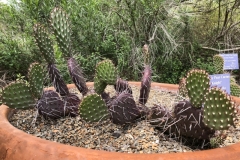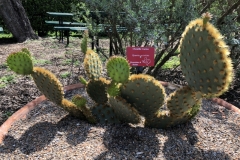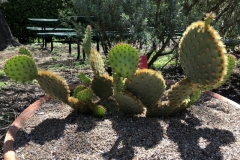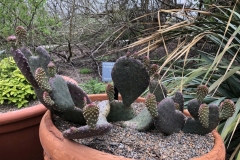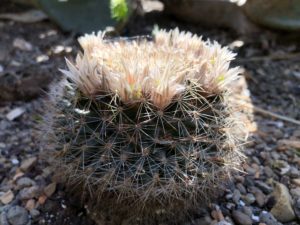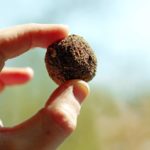The Texas Native Plant Lab Comes Alive This Spring at the Dallas Arboretum
The Texas Native Plant Lab is a unique, student-centered outdoor learning space in the Main Garden of the Dallas Arboretum, and this time of year it produces endless plant awes. When we last visited the garden, I shared the story of how this cactus, succulent and wildflower educational space came to be, so I thought I’d check back in to share some of the magical plants that call the garden home – and there is no better time to share them than spring!
The Earliest Signs of Spring
In early March, while the daffodils and tulips were at their peak, the very first signs of spring in the TNPL began to appear in the form of tiny buds emerging from our smallest prickly pear species. Over the course of just a few weeks – and with recognizable growth from day to day – these little buds showed themselves to actually be new pads or blooms emerging. Interestingly, when you observe a prickly pear pad up close, every light (or dark) bump (depending on the species) is capable to producing this new growth. This is also the location from which the spines will eventually emerge – as well as the home to the very fine bristly hairs, known as glochids, which cause such irritation if you happen to unwittingly run your hand along them.
The TNPL is home to six species of prickly pear, and five of them are early growers. The photo series below shows growth from March to April. In addition to new pads and blooms (and fruit), you can also observe how several of the specimens lose their deep winter purple, returning to green pads during the growing season.
Opuntia ‘Dark Knight’
Opuntia aciculata
Opuntia aurea ‘Coombe’s Winter Glow’
Of course, the visual pinnacle for all of these species comes when they bloom. The variety and intensity of cactus blooms is nothing short of stunning, and for good reason; their blooms are not meant for our enjoyment, but rather they must quickly attract pollinators. Plants only bloom when there is sufficient water, and they can’t guarantee it will happen again, so they put all of their energy into these magnificent inflorescences.
Claret cup cactus, Echinocactus triglochidiatus, Opuntia sp. ‘Little Monk’
Opuntia polyacantha ‘Citrus Punch’ and Opuntia aurea ‘Coombe’s Winter Glow’
March Showers Bring … Fire Ants?
The TNPL isn’t just home to beautiful native plants. It is also home to an assortment of birds, reptiles and insects. One of the less desirable visitors, though, is fire ants.
Just like in our yards and gardens at home, fire ants tend to appear after large rains push them up to higher, and drier ground.
While they are a nuisance, their industriousness is admirable. In just a day’s time, they completely engulfed a horse crippler cactus! Fortunately, a few soaks with soapy water did the trick.
A happy and healthy horse crippler, Echinocactus texensis, in bloom
Teacher Training in the Garden
On Saturday, March 31, we hosted a teacher workshop in the TNPL. The workshop, Art + Science, invited science and art teachers, along with librarians, to explore ways to connect their content in a meaningful way.
Teachers sketch native plant adaptations
After sketching plant adaptations present in the garden, including spines, showy flowers and waxy coatings, each participant created an art piece highlighting one of the adaptations they had illustrated – but they had to roll a dice and create the art piece in the style of a famous artist. Can you identify the styles of the artists represented below?
The Blooms Don’t End in Spring!
While some of my personal favorites only bloom in spring, a number of plants in the TNPL will bloom throughout summer. Texas Native Plant Lab isn’t just a great field trip to learn about plant adaptations and environments, it’s also a quiet place to escape to on a family visit to the garden, so we hope to see you around the next time you visit – just be sure to observe our beautiful blooms from a safe distance!
Dustin Miller
Director of Education
Dallas Arboretum
Related Posts
Comments are closed.





